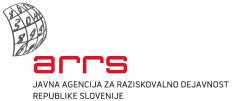Methodology for monitoring the sustainable use of karst show caves with automatic measurements – role model – Postojna cave
Principal Investigator at ZRC SAZU
Franci Gabrovšek, PhD-
Original Title
Methodology for monitoring the sustainable use of karst show caves with automatic measurements – role model – Postojna cave
Project Team
Stanka Šebela, PhD, Cyril Mayaud, PhD, Tadej Slabe, PhD, Matej Blatnik, PhD, Janez Mulec, PhD , Franjo Drole-
ARIS Project ID
L6-9397
-
Duration
1 July 2018–30 June 2021 -
Financial Source
Javna Agencija Za raziskovalno dejavnost RS

Postojnska jama d.d.

REODOM rešitve za odložljiva omrežja d.o.o.

Partners
MEIS storitve za okolje d.o.o
Karst cave tourism is booming all over the world and becoming an important economic activity. However, this presents a potential threat of an irreversible destruction of karst caves.
Natural ventilation is the key mechanism that “carries away” the impacts of tourists, i.e. CO2 and the introduced energy, from the cave atmosphere. In order to understand the air currents in a highly complex cave geometry, we need a greater amount of system knowledge and dedicated measurements than can be found in previous partial, unrelated solutions. Based on ventilation mechanisms, we will give a comprehensive answer, theoretical and practically measurable, on how to monitor the tourist use of a karst cave using an Automatic climatological expert cave measurement system to prevent excessive use. The key global contribution will be the establishment of a methodology for determining carrying capacity based on automatic measurements of cave microclimate, and the monitoring of the sustainable use of a karst show cave.
All conclusions regarding the carrying capacity will be based on automatically measured data on the cave’s microclimate; they can be independently verified and will not be a subjective estimate.
The project’s main innovation will be the introduction of automatic measurements of CO2 as a direct tracer of successful ventilation or of excessive use. Our new key hypothesis is that carrying capacity is the DYNAMIC FUNCTION of the cave’s microclimatological parameters. It can be independently verified by suitable dedicated measurements of cave microclimate.
Besides monitoring excessive tourist use, the project will also develop a methodology for identifying cave microclimate based on automatic measurements. We will be introducing the following comprehensive innovations into global karstology:
- Criteria for the micro, mezzo and macro placement and representativeness of measurement sites;
- Guidelines for the periodic calibration of sensors and electronic interfaces in karst caves;
- Guidelines for automatic control of data quality for automatic cave measurement systems, which will be a global innovation in karstology; most karstological climatological measurements do not focus on this important segment;
- Methodology for processing the measured microclimatological data, which will encompass directions for a suitable sampling frequency at the sensor level, and directions regarding the contents of databases and statistical processing in longer time units;
- Methods for the fast detection of changes in microclimate;
- Perfected use of DTN (delay and disruption networking) technology for non-invasive communications in karst caves;
- Testbed environment for a practical demonstration in the world-famous Postojna Cave in the Classical Karst, which is visited by masses of tourists.
- The anticipated basic scientific result is identification of the natural ventilation of a karst cave, as the key mechanism of the transfer of energy and matter between the cave and external atmosphere, using a measurement system and assessing it with a model.
Application of the original project results will not be limited to show caves; most of them will be generally applicable in karstological research. So far, no one has systematically analysed and combined these sets into a comprehensive methodology. The methodology as a whole will denote a total global innovation. In light of the boom in cave tourism, this will serve as an important scientific basis for preventing the harmful effects of tourist use.
Implementation of the set objectives is guaranteed by the previous experience and (independent and joint) research of IZRK and MEIS.